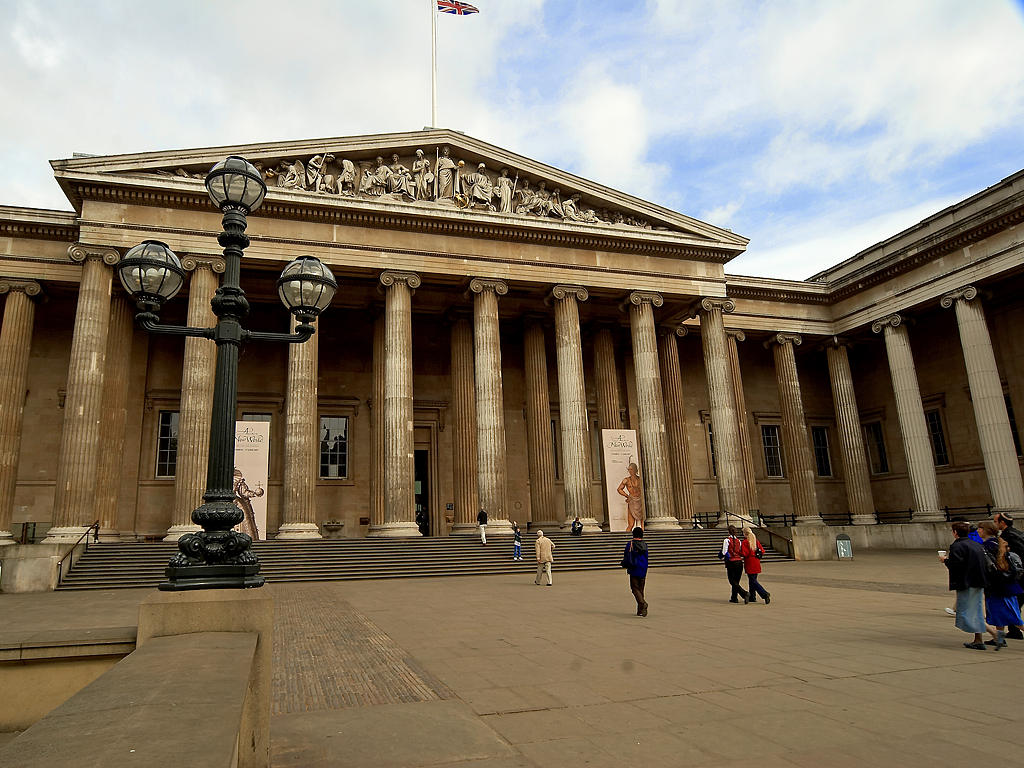Deliberate destruction of ancient remains by the Taliban and Islamic State force us to confront the tragic fragility of our cultural heritage. Fires have wrought terrible damage at Clandon Park and the Glasgow School of Art. And processes of decay and erosion take away more of what has survived. 'Saving' the past is a common trope among art historians. Art history is, after all, a history of objects. And psychologists tell us that we're predisposed to value what we already have more highly than what we might gain. But I can't always agree with the preservationist impulse, and a few very different recent examples have made me think about what we should save.
| Picture: Telegraph |
The National Trust tells us that Clandon Park (above) will be rebuilt 'in some form' following the recent fire. I'm not sure what 'some form' means, but Clandon Park has gone forever. Reconstruction now would be pastiche. Maybe it would be a pretty pastiche, and a fine backdrop for the contents that were saved. But the cost will be immense, and it would be downright irresponsible to squander money and expertise on constructing a fake when there are so many other real and pressing preservation projects that need funding. The Clandon fire was a dramatic tragedy that has naturally captured the public's attention. The myriad smaller projects that could be funded instead of rebuilding Clandon are less newsworthy and less exciting, but far more worthy.
 |
| Picture: Irish Times |
The Irish Times is keen to 'save' a group of pictures from the Beit collection, which are up for sale next month. They're a motley bunch, but include the wonderful Rubens above. The pictures are privately owned, and were only moved to Ireland in the 1950s. The best of the Beit pictures, including Velazquez, Vermeer, Metsu's greatest masterpieces and an exceptional Ruisdael were given to the National Gallery of Ireland. The pictures they're selling have no longstanding connection to Ireland or to Russborough House, where they were hung. Indeed, the family were poor stewards of Russborough, ripping out original fittings to make room for their pictures. The only reason for campaigning to 'save' these pictures is that they happen to have been in Ireland at a particular point in time. The thing I find most odd about this is that if the cost of these pictures were given to the National Gallery of Ireland they could buy far better pictures that are more worthy of their collection. These surely aren't the pictures they would choose to buy if they had a free choice. But no one is campaigning to give them an increased acquisition budget.
 |
| Picture: Telegraph |
Saving the Frick Collection is a slogan I can wholly endorse, and I'm delighted they've abandoned their dreadful expansion plan. Congratulations to all involved in the campaign against it. But the campaign quickly fixated on the small garden (above) that would have been lost. It's a lovely little oasis by a famous garden designer, and the Frick was despicably dishonest in claiming that it was a temporary feature. Nevertheless, the loss of the garden was for me the least harmful part of the Frick's plan. I was far more concerned that the intimate experience would be over-ridden by a gargantuan extension to allow them to put on mega-blockbusters and show more contemporary art. The Met, just across the street, is a universal museum with the space and resources for big exhibitions. Why must the Frick do exactly the same? For hundreds of years we've been able to enjoy different kinds of museums - universal museums, house museums, smaller and quirkier museums with more specialist or more eclectic collections. Today every museum seems to be trying to be exactly the same as every other museum, showing lots of contemporary art (alongside old masters if you want to be really hip) and plenty of big blockbusters alongside a great cafe and plenty of parties. Everyone loves parties.
Visitors don't benefit. Why should they care whether a mega exhibition is at the Frick, the Met or somewhere else in Manhattan? The beneficiaries are the trustees and the curators. They get to work on a cool new project. They get the kudos of big exhibition openings. It's a corrupting trend that concerns me more than the preservation of garden, however charming. So yes, save the garden. But more important, stop them obliterating the Frick with their crass new museum. Preserving the ambiance of the Frick seems rather ethereal and hard to politicise, but it's the most important thing about the place.
.jpg) |
| Picture: Victorian Society |
I'm also happy that King's College London has scrapped a hideous planned extension, right next to the Courtauld Institute. The buildings that they would have demolished (above) add variety and interest to the street, and they have their charms. But they really aren't anything very special. I don't think there is a strong claim to 'save' them. In this case I don't see a strong case for 'saving' these buildings. But I do see a strong case for saving - or indeed creating - interesting and humane streetscapes. My objection was more to the replacement than to the demolition. I like that cities can be palimpsests and I think it's important to preserve London's Victorian heritage, but that doesn't mean keeping all of it. The greatest threat today, in my view, is the almost uniformly ugly, boring and domineering new buildings that are being created, rather than the outstanding character of the buildings that are being lost.
 |
Picture: Amazon |
Psychology gives us an insight into the preservationist impulse. A famous experiment divided people randomly into two groups. In one group everyone was given a mug, and asked how much they'd sell it for. The other group was asked how much they'd pay for the mug. A classical economist would assume the number would be the same - in each case people are being asked to put a value on the same object that they didn't previously own. But actually the group that was given the mug put a significantly higher price on it. It's called the endowment effect - the extra value that we attribute to things we own. That's why marketers offer us free trials and free samples; once we have something, we don't want to give it up. But it's not a rational way of valuing things. What if we're given a mug that we like less than another we would have chosen if we had a free choice?
Shifting from mugs to heritage, the same effect is in play. Dowdy old buildings are valued because they are familiar rather than because they are good. We want to create a new fake Clandon Park rather than secure the preservation of important buildings that actually survive. Pictures that happen to be in the country already are valued more highly than ones we don't regard as our own. We keep trying to 'save' things for the nation, rather than going out and buying better things elsewhere. I share the impulse to preserve, and I recongise its power as a marketing slogan, but it's not always the right message.




